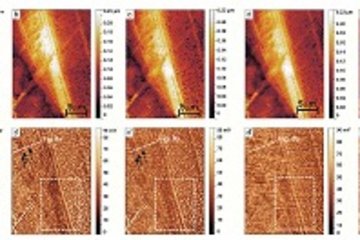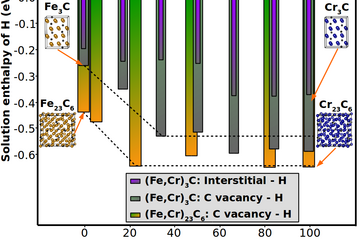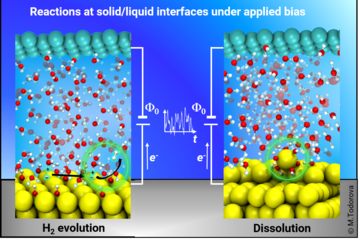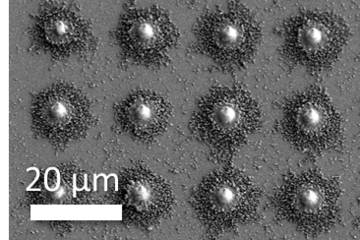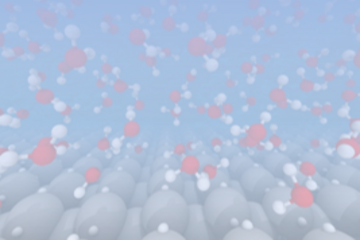All genres
61.
Journal Article
Surface analytical studies of Ar-plasma etching of thin heptadecafluoro-1-decene plasma polymer films. Applied Surface Science 252 (23), pp. 8331 - 8336 (2006)
62.
Journal Article
Morphology and patterning processes of thin organosilicon and perfluorinated bi-layer plasma polymer films. Plasma Processes and Polymers 3 (1), pp. 39 - 47 (2006)
63.
Journal Article
Barrier properties of polyurethane coil coatings treated by microwave plasma polymerization. Surface and Coatings Technology 200 (12-13), pp. 4040 - 4049 (2006)
64.
Journal Article
Spectroscopic analysis of the interface chemistry of ultra-thin plasma polymer films on iron. Surface and Coatings Technology 200 (1-4), pp. 100 - 103 (2005)
65.
Journal Article
Combination of FTIR reflection absorption spectroscopy and work function measurement for in-situ studies of plasma modification of polymer and metal surfaces. Surface and Coatings Technology 200 (1-4), pp. 280 - 283 (2005)
66.
Journal Article
Chemical structure and morphology of thin bilayer and composite organosilicon and fluorocarbon microwave plasma polymer films. Surface and Coatings Technology 192 (2-3), pp. 189 - 198 (2005)
67.
Journal Article
Adhesion and de-adhesion processes at polymer/metal interfaces. Annual Reviews Materials Research 35, pp. 571 - 615 (2005)
68.
Journal Article
Adhesion and De-adhesion mechanisms at polymer/metal interfaces: Mechanistic understanding based on in situ studies of buried interfaces. Annual Review of Materials Research 35, pp. 571 - 615 (2005)
69.
Journal Article
Application of the Scanning Kelvin Probe for the Study of the Corrosion Resistance of Interfacial Thin Silicon Organic Films at Adhesive/Metal Interfaces. Silicon Chemistry 2 (5-6), pp. 235 - 245 (2005)
70.
Journal Article
Height-regulating scanning Kelvin probe for simultaneous measurement of surface topology and electrode potentials at buried polymer/metal interfaces. Journal of the Electrochemical Society 152 (3), pp. E114 - E122 (2005)
71.
Journal Article
Applications of a new height regulated Scanning Kelvin Probe in Adhesion and Corrosion Science. Journal of the Electrochemical Society 152 (3), pp. E114 - E122 (2005)
72.
Journal Article
Formability of organic coatings - An electrochemical approach. Electrochimica Acta 49 (22-23), pp. 3947 - 3955 (2004)
73.
Journal Article
Spatially resolved measurements of the diffusion of water in a model adhesive/silicon lap joint using FTIR-transmission-microscopy. International Journal of Adhesion and Adhesives 24 (3), pp. 193 - 200 (2004)
74.
Journal Article
Correlation of morphology and barrier properties of thin microwave plasma polymer films on metal substrate. Electrochimica Acta 49 (12), pp. 1999 - 2013 (2004)
75.
Journal Article
Spectroscopic and electrochemical characterisation of thin cathodic plasma polymer films on iron. Applied Surface Science 229 (1-4), pp. 87 - 96 (2004)
76.
Journal Article
Tailoring of the morphology and chemical composition of thin organosilane microwave plasma polymer layers on metal substrates. Thin Solid Films 446 (1), pp. 61 - 71 (2004)
77.
Journal Article
Scanning Kelvin Probe measurements of the stability of adhesive/metal interfaces in corrosive environments. Advanced Engineering Materials 6, 3, pp. 163 - 167 (2004)
78.
Journal Article
Tailored thin plasma polymers for the corrosion protection of metals. Surface and Coatings Technology 173-174, pp. 996 - 1001 (2003)
79.
Journal Article
In-situ spectroscopic and corrosion studies of ultra-thin gradient plasma polymer layers on zinc. Applied Surface Science 217, pp. 223 - 232 (2003)
80.
Journal Article
In situ infrared spectroscopic studies of ultrathin inorganic film growth on zinc in non-polymerizing cold plasmas. Surf Interface Anal 35, 10, pp. 799 - 804 (2003)




